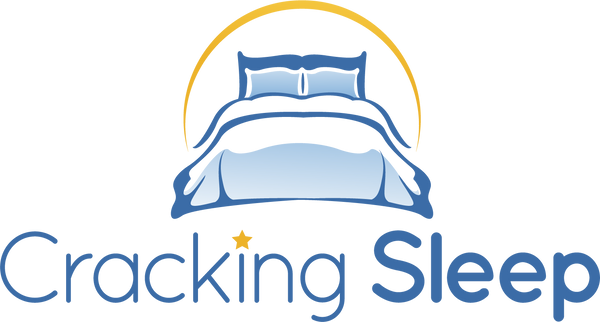Read time: 5 minutes
What’s inside?
- What’s new with screens and sleep?
- What was tested?
- How was the test measured?
- And the answer is?...
- Is it just this one test?
- So, that’s settled then!?
This post is dedicated to my wife.
We’ve had a long-standing disagreement on the place of TVs and other screens in the run-up to sleep time in general and in the bedroom in particular.
I’ve long been a believer in having a quiet and pitch-black – can’t see your hand in front of your face – space to nod-off.
Not so she.
So, have I had a change of heart?... Let’s see…
What’s new with screens and sleep?
I’ve been digging into some sleep studies, the first of which was by sleep expert Dr. Michael Gradisar, who spent almost 20 years treating sleep disorders at Flinders University in Australia and is now Head of Sleep Science at Sleep Cycle AB.
Michael’s studies looked at how people across cultures interacted with screens and other materials, such as printed books before settling down.
The main argument against screens to date has revolved around blue light from screens disrupting our melatonin induced sleep signals. The thoughts here were that blue-light disrupts the sleep signals in our brains and tells us it is still daytime and we shouldn’t be nodding off just yet.
What was tested?
One of Michael’s tests was run on teenagers, who kinda like technology.
Basing his argument on the often quoted phrase ‘You shouldn’t use screens within one-hour before bed’, Michael’s team had these teenagers run tests for 3 nights.
On the first night they used an iPad, set to full brightness, for that one-hour before bed. This shone bright-light, including enriched blue-light, into the teenager’s eyes.
For the next night, they ran a similar test but this time used an app called f.lux, which reduced the amount of blue-light hitting the eye… more of a warm-glow than the bright white light experienced earlier.
If you are interested, f.lux is available for pretty much any device, mac, pc, iOS and Android… although Apple now have their own version called Nightshift too.
Anyway, back to the test…
Finally, for a 3rd night, they removed the f.lux app but used a completely dimmed screen.
How was the test measured?
Many of us with sleep apnoea are familiar with polysomnography tests. It’s a standard, some would say gold-standard, test used to assess a potential patient for sleep apnoea.
It also captures how long the patient takes to fall asleep.
And the answer is?...
When comparing using a dimmed-screen versus a bright one, it took around 3 ½ minutes longer after bright screen use to fall asleep versus the dimmed-screen.
Yes… there’s a difference, but nothing more than a margin of error.
At this point anyone reading this needs to take stock of our own in-built biases.
Me too.
Most of us have beliefs that fall onto one side of the fence here. Given our belief that quality of sleep depends on it, not many of us are ambivalent on this one. So, just run a sense-check on yourself if your automatic reaction is to say ‘ah, but…’.
Is it just this one test?
Michael’s team ran loads of tests but it is worth looking at tests run by other people to see if there’s any joined-up thinking to be found.
Two other organisations, one in the US and another in Norway, ran similar tests pitting e-reader devices against paper books.
The US study found it took almost 10 minutes longer to fall asleep after using the e-reader device versus the paper book.
Well, there you go… some will say.
Books good, electronics bad.
But then there’s the Norwegian study, which found the opposite to be true. In this study it took around 8 minutes longer to fall asleep after reading the paper book versus the e-reader.
Whichever way you look at it… 10 minutes or so over the course of an 8-hour sleep cycle isn’t really that much to worry about. Is it?
So, that’s settle then!?
Well… eh, no.
These studies are seriously interesting when thinking about how worked-up some of us may get when deciding when to put the electronics away for the night, but there’s always more to consider.
Yes, these studies imply we may be overthinking the use of devices close to bedtime.
And… you may not want your kids having this info at hand when you’re trying to get the lights out.
But it is also important to consider what these studies don’t cover.
They don’t cover any longer-term impact on using screens late at night.
They don’t cover the potential for distraction when the phone pings or even just having it at the bedside.
I still get peeved when my wife’s phone pings at 7am on a Sunday as the Do Not Disturb switches off.
(Yes, there are people out there who think its okay to message someone at 7am on a Sunday morning!)
Mini-rant over.
They don’t cover the potential impact on our ability to function the next day after heavy screen use late at night.
This alone could be enough to play-safe with our children’s use of electronics when they need to function at school.
Or even our own… if we want to perform at our best the next day.
There are always more questions than answers, but it appears from this lesson using the excuse of ‘You won’t get to sleep if you keep using that screen’ doesn’t really have the same impact anymore.

